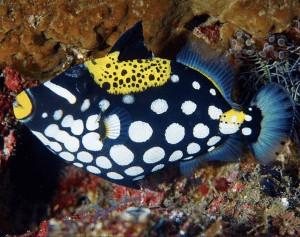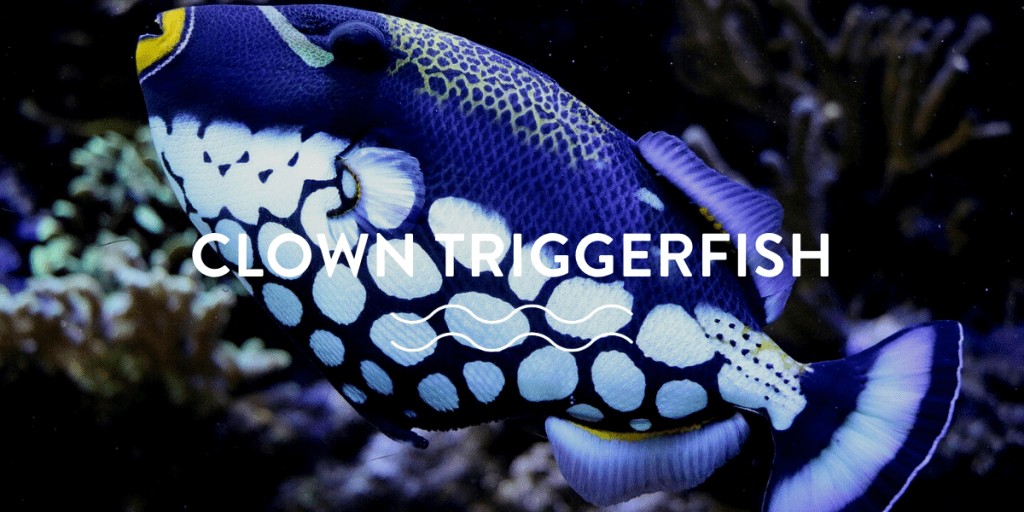Are clown triggerfish the jokers of the seas? Well, actually no. The ‘trigger’ part of their name probably more aptly describes their personalities! Triggerfish can be quite territorial and actively defend their domaine, especially during mating season. Survival of the fittest is very dominant within this species.
They are a real treat for scuba divers to see on any dive, given their bright distinctive patterns and somewhat peculiar habits, but be sure to give them a wide birth to avoid those teeth! Clown triggerfish are on the more mellow side of the family though

Ocean Mimic chose the clown triggerfish to be one of the mimic suits because of its gorgeous pattern and because they are a little bit quirky. Here’s what Emma had to say:
“Triggerfish are so iconic! Most divers have a good triggerfish story to share and as a result a big dose of respect for these feisty creatures!”

There’s more to clown triggerfish than meets the eye:
- The distinctive spots, lines and head markings of clown triggerfish make it almost look like it is wearing clown makeup. Hence the name.
- They have a set of spiny dorsal fins that are pretty cool. When they feel threatened, they engage the spines. The first spine can only be lowered after the second is pulled back, like a trigger (which is where the name comes from). They use this spine for defence and also to lock themselves into crevices.
- Another neat element of their bodies is that they can move each eye independently, allowing them to keep an eye out for invaders of their territory and predators.
- Triggerfishes emit a grunt-like noise when they spot a predator (sounds almost like a pig), which warns other animals of the danger.
- Males arrive at breeding grounds first in-order to establish a territory and prepare nests on the seafloor. After the females arrive and choose a mate they lay tens of thousands of eggs. Females share care of the eggs until they hatch, blowing water on them to keep them well supplied with oxygen. Territories tend to spiral upwards in a triangle, so keep that in mind if you come across triggerfish defending a nest!
- They feed upon hard-shelled invertebrates like sea urchins, crustaceans and mollusks by crushing them with their powerful teeth. They are voracious eaters and are not averse to dragging large bits of coral out of their way to get at a particularly tasty treat
- Triggerfish often use hydraulic jetting. They direct a jet of water out of their mouth into the sand to uncover buried prey, to flip over protected prey items like spiny sea urchins or to chase away other fish.
- As a result of its bright colours, the clown triggerfish is one of the most sought after reef fishes for the aquarium trade. Meaning it is unfortunately often captured in the wild to support this industry. To help combat this, researchers are working to raise triggerfish in captivity so that wild populations might be left alone.
Triggerfish are important
As well as being pretty, they are top predators on the reef. They help to control the populations of coralivores (like the Crown of Thorns and Sea Urchins), so it’s important that this species remains a feature on our coral reefs. Research has shown that young fish can actually be drawn to degraded coral reefs by loudspeakers playing the sounds of healthy reefs. This is a vital step in restoring coral reefs, as diverse fish populations help maintain healthy ecosystems. Wonder if the distinctive grunts of the triggerfish featured in the recordings!?
Let us know what your favourite fish is and share any experiences you’ve had with sassy triggerfish!


